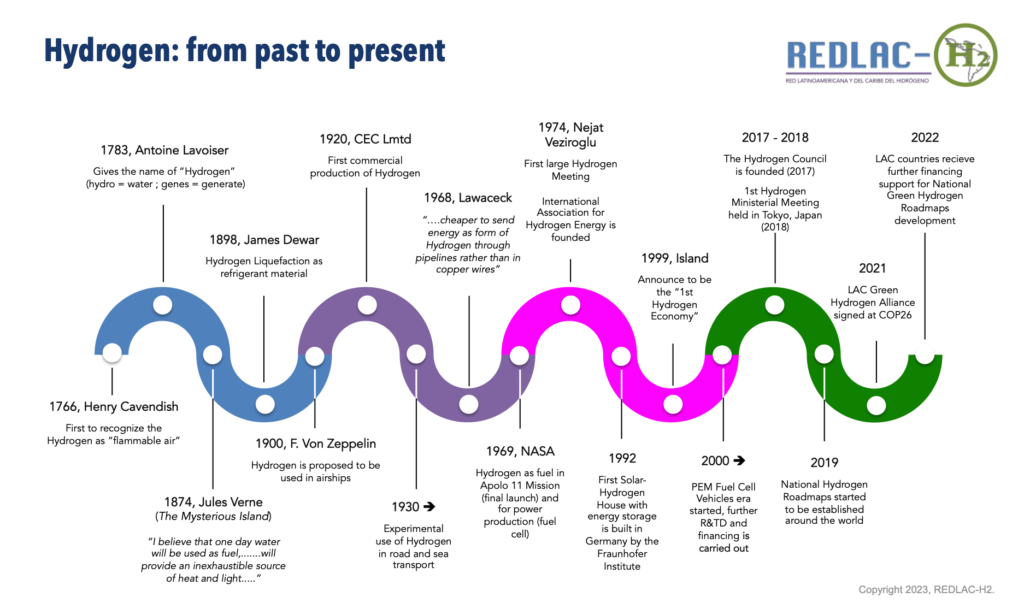The Hydrogen
Hydrogen (H+) is the lightest chemical element that exists, and it occurs in a molecular state, forming the diatomic gas (H2) under normal conditions; which strictly speaking should be identified as Di-Hydrogen.
Hydrogen constitutes approximately 75% of the visible matter in the Universe and is responsible for a large amount of chemical energy in the form of electromagnetic radiation emitted by stars due to nuclear fusion between hydrogen nuclei to transform into Helium (He+2); this is the case of our star “The Sun”, whose energy gives us the light and heat necessary for life. On our planet “The Earth”, small quantities of Natural Hydrogen have been found underground, however Hydrogen is produced from hydrocarbons or water. Different transformation processes are necessary for its production, which is used primarily in petroleum refining and the chemical industry. By itself, hydrogen gas (H2) is not considered a primary energy source, but an energy vector with enormous potential for use in strategic sectors such as energy and transport, and the transformation industry (metal, cement, mining, etc.).

Foto: Créditos de la NASA (nasa.gov), El Universo, Hubble Telescope image.

” I believe that someday water will be a fuel, that hydrogen and oxygen…..
will provide an inexhaustible source of heat and light…..”
Jules Verne, The Mysterious Island, 1874
Hydrogen is positioned as the main accelerator of the decarbonization of economies around the world since it does not emit pollutants when used directly for combustion or in Fuel Cells, as it is a “Net-Zero Emissions” carbon carrier.
The methods for obtaining Hydrogen are classified by their source and level of pollutant emissions. To identify each of them, a color code has been proposed at the international level, depending on the type of technology used.
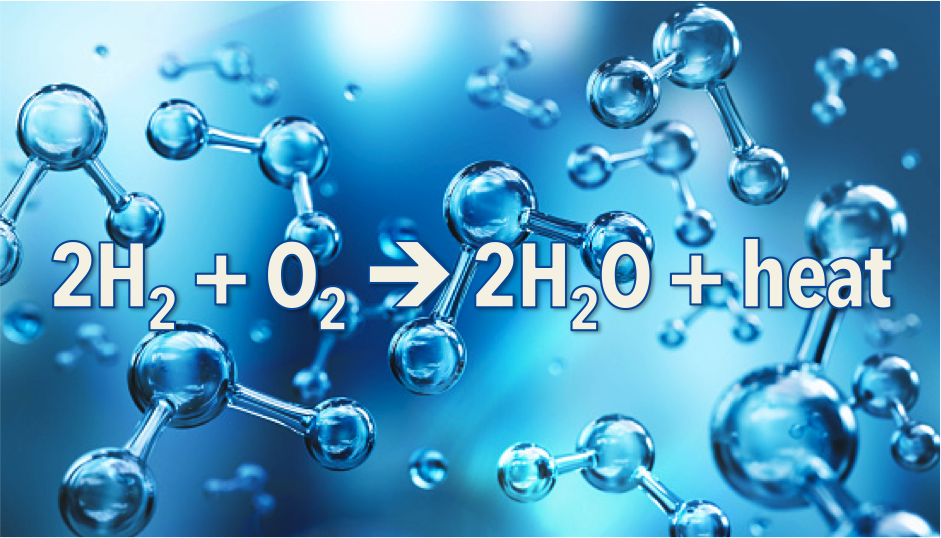
Colors of Hydrogen
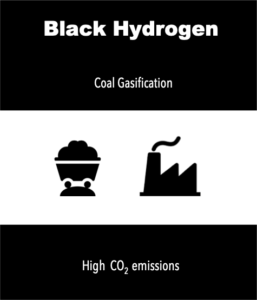

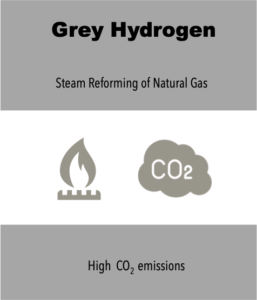
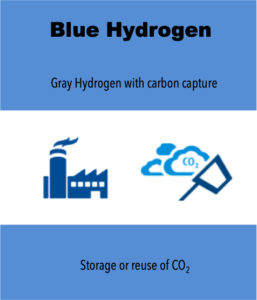
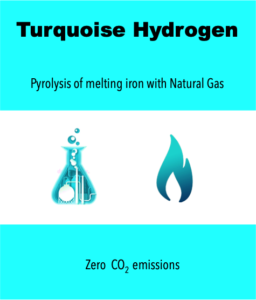
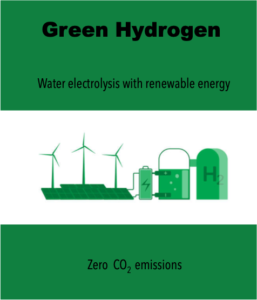

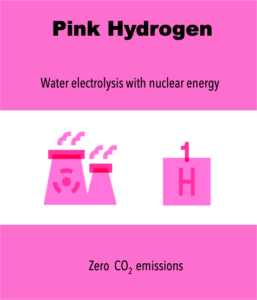
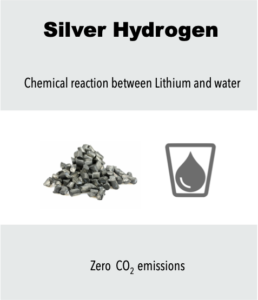
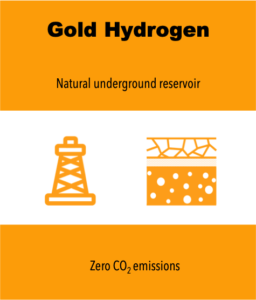
The highest Hydrogen production worldwide comes from Gray Hydrogen in oil refineries through the Steam Methane Reforming (SMR) process, but with carbon emissions; this Hydrogen is mainly used for both gasoline and petrochemicals (ammonia and fertilizers) production. If the carbon emissions of Gray Hydrogen are captured with Carbon Capture & Sequestration (CCS) technology, then it is classified as Blue Hydrogen. On the other hand, water electrolysis process is considered to be the most sustainable because there are no carbon emissions to the atmosphere and it uses electrical energy from renewable sources; here Yellow Hydrogen (from solar energy), Pink Hydrogen (from nuclear energy), and Green Hydrogen (combination of renewables) stand out, the latter being the one with the greatest potential due to the reduction of renewable or “green” electricity costs.
An innovative process for the production of Hydrogen has emerged, mainly using Lithium (Li+3) and water (2Li + 2H2O = H2 + 2LiOH). With the excessive exploitation of Lithium worldwide to produce batteries applicable to electronic devices as well as for electromobility in electric vehicles (EV), an alternative method is the production of Hydrogen by reusing the Lithium from batteries. Lithium Batteries drain its electromechanical energy, but not its chemical energy and Hydrogen could be produced with water and without additional energy (electrolysis); so in REDLAC-H2 we call it as Silver Hydrogen.
Recently, the existence of natural hydrogen has been discovered underground in Mali, Africa in the Bourabougou field, however there are still difficulties for its exploitation and production. If there were large quantities of this gas in natural reserves and also renewable, it would be called Golden Hydrogen (H2D) as it would be considered as the most valuable because it would be a primary energy source and very possibly low cost. Interesting projects are emerging in Spain (Aragon Project), United States (Nebraska Field) and Australia (Ramsey Project) that lead the exploration of natural hydrogen (H2D).

Use of Hydrogen

Energy.
Hydrogen is considered the most important future energy vector for electricity generation and energy security because of its versatility of storage. When electrical energy is produced in excess by renewable sources, hydrogen gas can be generated from the electrolysis of water and subsequently stored and/or injected into natural gas grids; this conversion is known as Power-to-Gas (P2G).

Transport.
For direct use in cars, trucks, ships, and trains with a fuel cell or internal combustion technology. When using fuel cells, electricity is produced internally and stored in an electric cell. In internal combustion, hydrogen is burned directly and only water vapor is emitted. Transportation is the main sector with the greatest potential for reducing carbon emissions through the use of Hydrogen.

Industry.
Due to the High Calorific Value (HCV) and chemical properties of hydrogen, it can be used in energy-intensive industries such as oil refining, mining, cement, petrochemicals, and metallurgy, among others. In addition to being an energy vector for process optimization and energy efficiency, Hydrogen is ideal for displacing the use of natural gas and significantly reducing CO2 emissions.
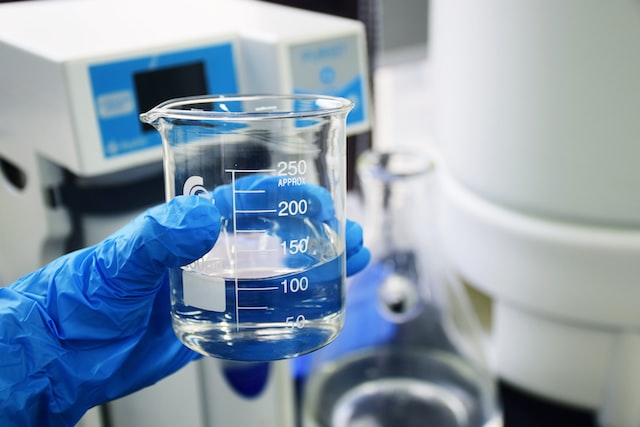
Raw material.
Hydrogen is primarily used as a feedstock for the production of gasoline, polymers, solvents, ammonia, and fertilizers, but with a high carbon footprint. However, hydrogen produced from renewable sources (electric power) is prioritized in the future for the production of synthetic liquid fuels (methanol, kerosene, jet fuel), green ammonia, and green fertilizers. This conversion is known as Power-to-Liquids (P2L).
Photo by Richard Horvath on Unsplash
Hydrogen properties
Hydrogen is a chemical element whose atomic structure has a proton (+) in its nucleus and an electron (-) in its orbital. It is represented by the symbol H and is located in group 1 and period 1 of the Periodic Table of the Elements. When two hydrogen atoms are joined at ideal temperature and pressure, the Hydrogen Molecule (H2) is formed and energy (heat) is released by the covalent bonding of electrons. Hydrogen has 3 natural isotopes: Protium (1H), Deuterium (2H), and Tritium (3H).
Hydrogen was discovered in 1766 by the scientist Henry Cavendish, who was the first to determine that hydrogen was a particular element that oxidized in the presence of oxygen (air) to produce water, and who recognized it as “flammable air”. In fact, its name means “water-forming” and comes from the Greek words “hydros“, water, and “genos“, generator.
Physical properties:
| Atomic mass | 1.00797 g/mol |
| Molecular weight | 2.01594 g/mol |
| Density of gas | 0.0899 kg/m3 |
| Density of liquid | 70.79 kg/m3 |
| Melting point | 14.025 K (-259 ºC) |
| Boiling point | 20.268 K (-253 ºC) |
| Ignition point | 255 K (-18 ºC) |
| Flame temperature | 2318 – 2676 K (2045 – 2403 ºC) |
| Maximum flame speed | 346 cm/s |
| Ignition temperature with air | 803 K (530 ºC) |
| Low Heat Value (LHV) | 33.32 kWh/kg (119.97 MJ/kg) |
| High Heat Value (HHV) | 39.41 kWh/kg (141.89 MJ/kg) |
Hydrogen Atom (H+):
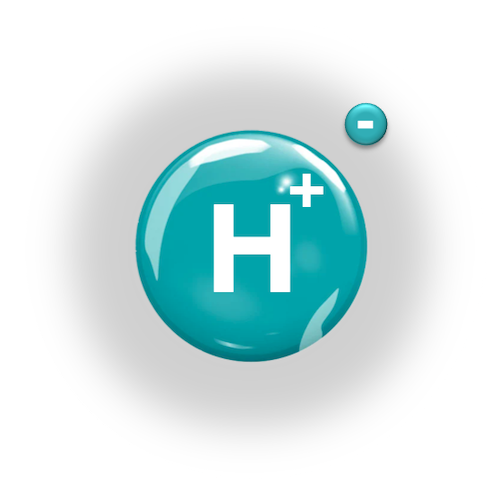
Hydrogen Molecule (H2):
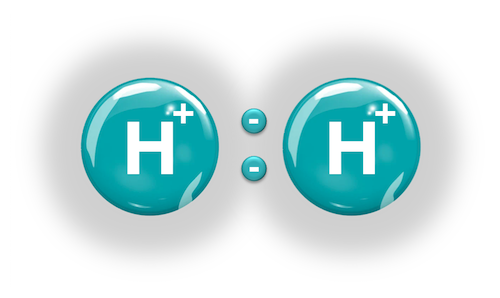
Contact us
E-mail: contact@redlac-h2.org

